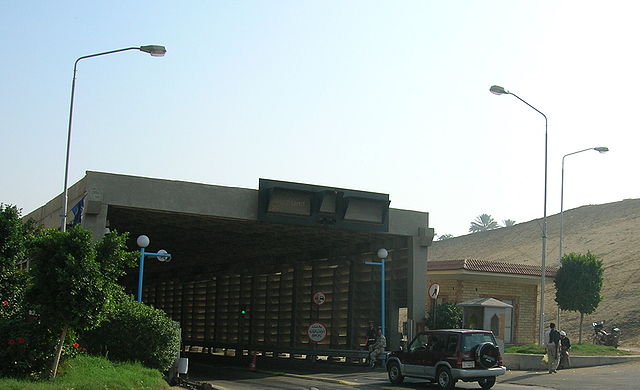Crossing the Suez Canal

The SUEZ CANAL (Egyptian Arabic: قناة السويس Kanāt El Sewēs) is an artificial sea-level waterway in Egypt, connecting the Mediterranean Sea to the Red Sea through the Isthmus of Suez. It was constructed by the Suez Canal Company between 1859 and 1869. After 10 years of construction, it was officially opened on November 17, 1869. The canal offers watercraft a shorter journey between the North Atlantic and northern Indian Oceans via the Mediterranean and Red seas by avoiding the South Atlantic and southern Indian oceans, in turn reducing the journey by approximately 7,000 kilometres (4,300 mi). It extends from the northern terminus of Port Said to the southern terminus of Port Tewfik at the city of Suez. Its length is 193.30 km (120.11 mi), including its northern and southern access channels. In 2012, 17,225 vessels traversed the canal (47 per day)
Source : wikipedia
The AHMED HAMDI TUNNEL is 1640 meter long tunnel, for automobiles, under the Suez Canal, at Shallufa. The tunnel is named for Ahmed Hamdi, an Egyptian engineer and General killed in action during the Yom Kippur War. It has two lanes of traffic, one in each direction, and connects the Asian Sinai Peninsula to the town of Suez on the African mainland.
Ahmed Hamdi Tunnel was originally constructed as a shield tunnel by the Tarmac Construction in November 1981. In 1992, the Japanese government granted aid to a project aimed at rehabilitating the tunnel which had developed leaks. It is 1.63 km long and has an outside diameter of 11.6 m.
The tunnel was part of a major drive to develop the areas surrounding the Suez Canal, including other projects such as the Suez Canal overhead line crossing (completed in 1998), the El Ferdan Railway Bridge, and the Suez Canal Bridge (completed in 2001).
Source : wikipedia
https://www.youtube.com/watch?v=Z-UqEDa5IBc
https://www.youtube.com/watch?v=zxqwL2OIj-E


Rate this article